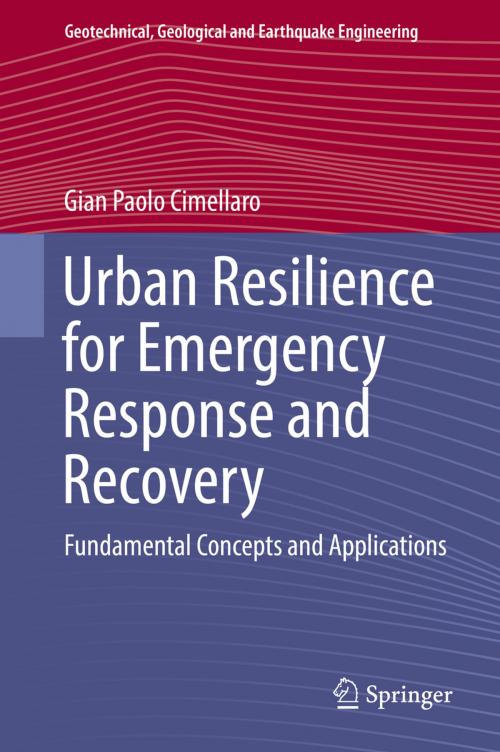Urban Resilience for Emergency Response and Recovery
Fundamental Concepts and Applications
Nonfiction, Science & Nature, Technology, Engineering, Civil, Science, Earth Sciences| Author: | Gian Paolo Cimellaro | ISBN: | 9783319306568 |
| Publisher: | Springer International Publishing | Publication: | June 4, 2016 |
| Imprint: | Springer | Language: | English |
| Author: | Gian Paolo Cimellaro |
| ISBN: | 9783319306568 |
| Publisher: | Springer International Publishing |
| Publication: | June 4, 2016 |
| Imprint: | Springer |
| Language: | English |
This book introduces the concepts of Resilience-Based Design (RBD) as an extension of Performance-Based Design. It provides readers with a range of cutting-edge methodologies for evaluating resilience and clarifies the difference between resilience, vulnerability and sustainability. Initially, the book focuses on describing the different types of uncertainty that arise in the context of resilience evaluation. This is followed by an entire chapter dedicated to the analytical and experimental recovery functions. Then, starting from the definition of resilience provided by MCEER, an extension of the methodology is provided that introduces the seven dimensions of Community Resilience, summarized in the acronym PEOPLES. They are: Population and Demographics, Environmental/Ecosystem, Organized Governmental Services, Physical infrastructures, Lifestyle and Community Competence, Economic Development, and Socio-Cultural Capital. For each dimension, components and subcomponents are defined and the related indices are provided.
Underlining the importance of the physical infrastructure dimension, the book provides several examples of applications for transportation, hydraulic, gas and power networks. The problem of interdependencies and the domino effect is also taken into account during the analysis. One of the book’s closing chapters focuses on different methodologies for improving disaster preparedness and engineering mitigation strategies, while the last chapter describes the different computer platforms available on the market for evaluating Community Resilience.
The book offers readers an extensive introduction to the concept of Resilience-Based Design, together with selected advanced applications for specialists. No prerequisite knowledge is needed in order to understand the book, and the Appendix offers valuable supplemental information on e.g. the probabilistic concepts. As such, the book offers a valuable resource for graduate students, young engineers and researchers who are interested in the topic, and can also be used as a supplementary text in graduate level Disaster Resilience courses.
This book introduces the concepts of Resilience-Based Design (RBD) as an extension of Performance-Based Design. It provides readers with a range of cutting-edge methodologies for evaluating resilience and clarifies the difference between resilience, vulnerability and sustainability. Initially, the book focuses on describing the different types of uncertainty that arise in the context of resilience evaluation. This is followed by an entire chapter dedicated to the analytical and experimental recovery functions. Then, starting from the definition of resilience provided by MCEER, an extension of the methodology is provided that introduces the seven dimensions of Community Resilience, summarized in the acronym PEOPLES. They are: Population and Demographics, Environmental/Ecosystem, Organized Governmental Services, Physical infrastructures, Lifestyle and Community Competence, Economic Development, and Socio-Cultural Capital. For each dimension, components and subcomponents are defined and the related indices are provided.
Underlining the importance of the physical infrastructure dimension, the book provides several examples of applications for transportation, hydraulic, gas and power networks. The problem of interdependencies and the domino effect is also taken into account during the analysis. One of the book’s closing chapters focuses on different methodologies for improving disaster preparedness and engineering mitigation strategies, while the last chapter describes the different computer platforms available on the market for evaluating Community Resilience.
The book offers readers an extensive introduction to the concept of Resilience-Based Design, together with selected advanced applications for specialists. No prerequisite knowledge is needed in order to understand the book, and the Appendix offers valuable supplemental information on e.g. the probabilistic concepts. As such, the book offers a valuable resource for graduate students, young engineers and researchers who are interested in the topic, and can also be used as a supplementary text in graduate level Disaster Resilience courses.















